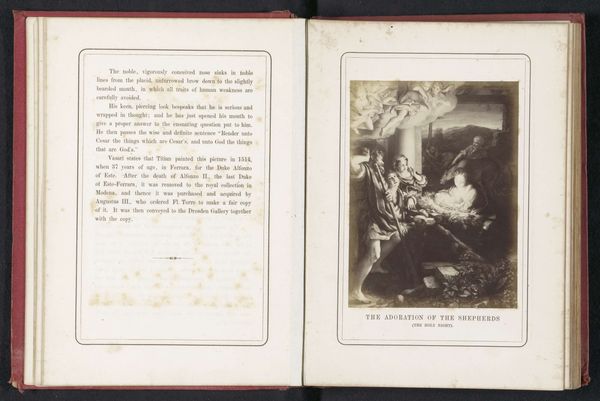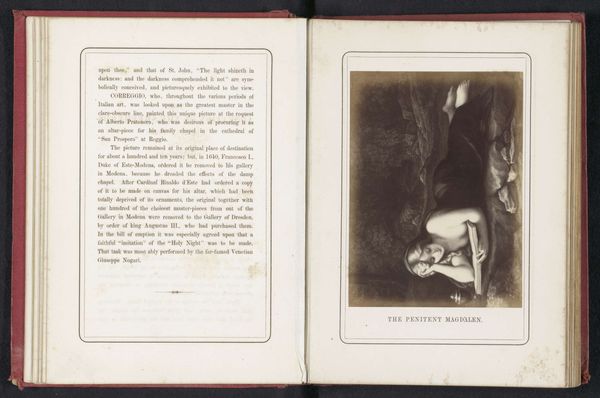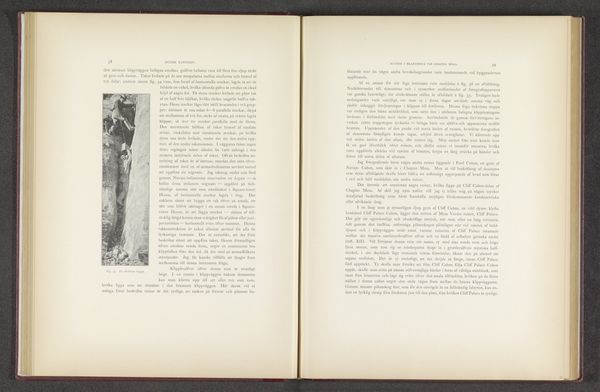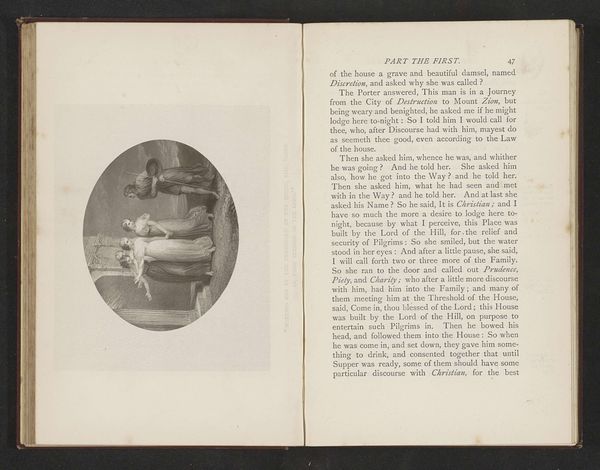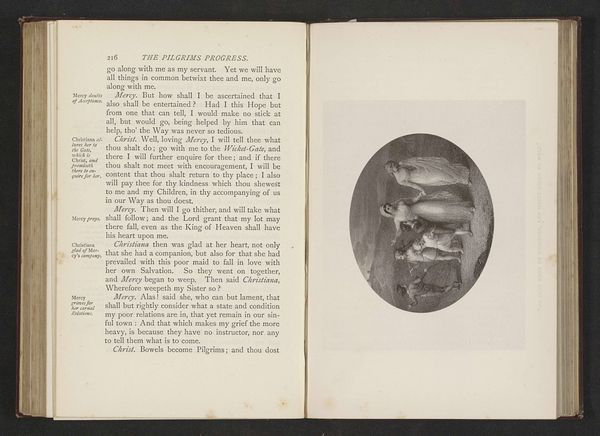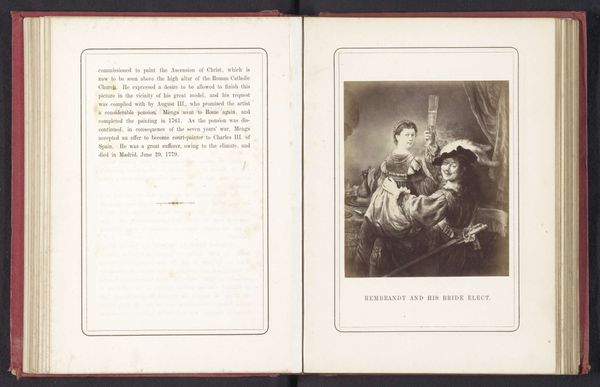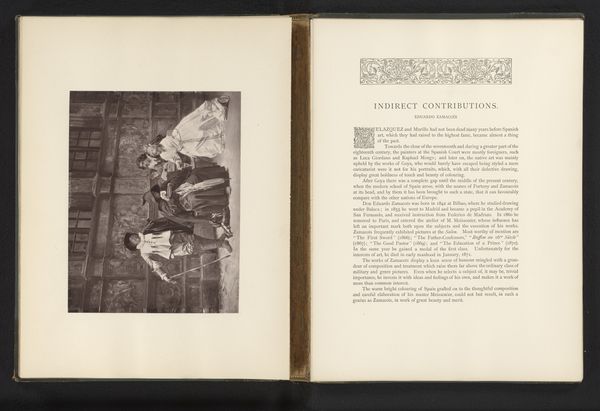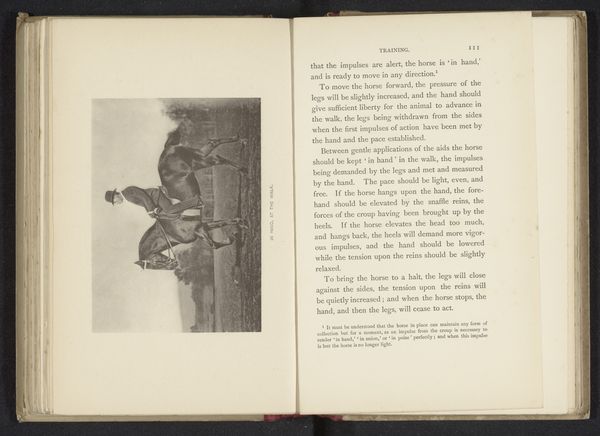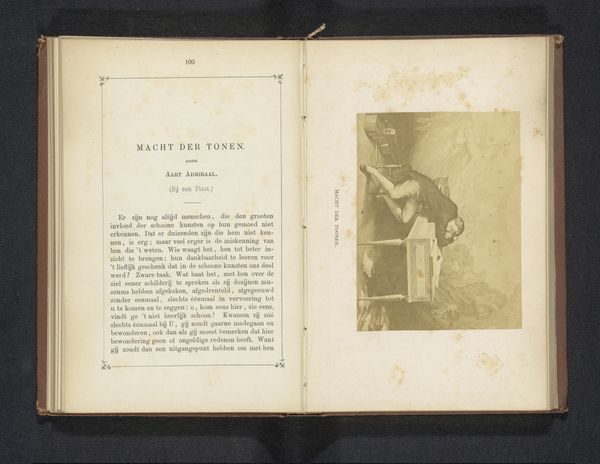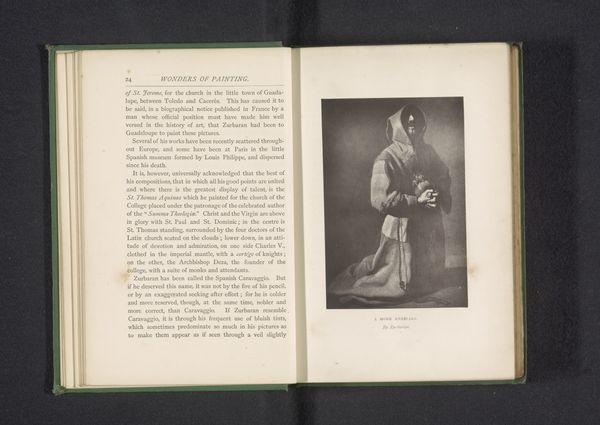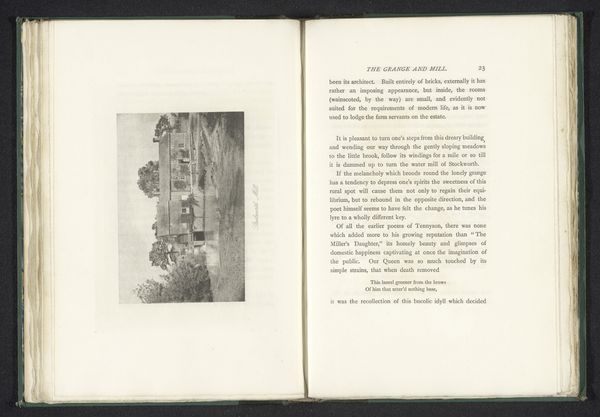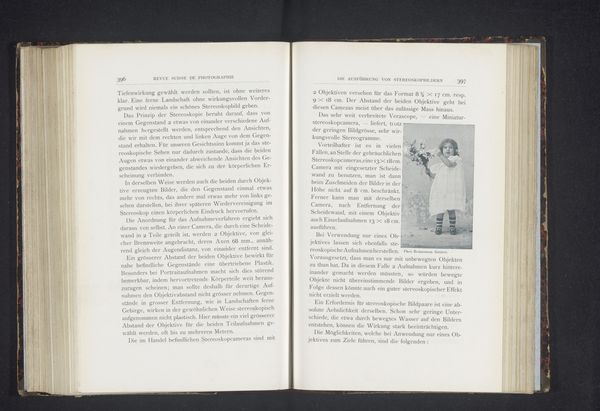
Fotoreproductie van een schilderij van een kluizenaar in gebed door mogelijk Gerard Dou before 1864
0:00
0:00
print, photography, gelatin-silver-print
#
portrait
# print
#
photography
#
gelatin-silver-print
#
genre-painting
#
academic-art
#
realism
Dimensions: height 137 mm, width 101 mm
Copyright: Rijks Museum: Open Domain
Curator: Here we have a gelatin silver print, "Fotoreproductie van een schilderij van een kluizenaar in gebed door mogelijk Gerard Dou," or a photoproduction of a painting of a hermit in prayer possibly by Gerard Dou, made before 1864, likely by Hanns Hanfstaengl. It presents as a staged genre scene. Editor: It’s strikingly somber. The light catches the figure, kneeling, illuminating the open book before him, but the surrounding darkness feels heavy, laden with centuries of ritual and self-imposed isolation. The composition guides the viewer's eye directly to that point of connection with the text, perhaps sacred scripture. Curator: The photographic reproduction lends a documentary feel, yet the image originates from a painting. This blurring of media invites questions. What does it mean to reproduce, to document, a constructed scene of piety? Is it an attempt to validate a certain idealized religious devotion within the growing secularism of the time? Editor: Beyond the immediately visible, there's a symbolic layering at play. The crucifix, the skull resting upon the book's stand. The lighting seems to be carefully chosen to invoke religious motifs, contrasting light and darkness, representing spirituality and perhaps even sin. The hermit himself appears burdened. Are we to view this as an aspirational devotion, or a cautionary tale of extreme penitence? Curator: That binary between aspiration and caution, devotion and repression, mirrors the broader socio-political tensions present at the time. The industrial revolution was transforming society, reshaping traditional power structures, while movements toward individualism challenged traditional societal norms. Is this a counter-narrative? A longing for a perceived simpler, more spiritually grounded past? Editor: Perhaps it also taps into something more timeless within the human condition: the impulse towards withdrawal, contemplation, and the search for meaning in solitude, or perhaps in tradition. These are ongoing human questions and that symbol, regardless of the context of its creation or recreation, carries these sentiments across time. Curator: Ultimately, I see an exploration of cultural anxieties through the guise of a devotional image. Editor: I am reminded that, the symbols represented endure. This image makes me consider my own beliefs and those enduring questions, regardless of my personal belief or lack thereof.
Comments
No comments
Be the first to comment and join the conversation on the ultimate creative platform.
